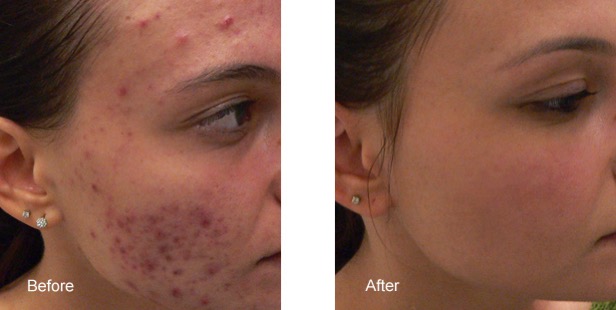Visible light or white light as we may call it, encompasses in itself a world of health and healing, which could not be completely explored or couldn’t be known for its true potential until, this light was spit into its constituents! It is essential for us to know that white light consists of seven different colours of light, ‘blue’ being one of them. Each colour corresponds to a single wavelength and has its own unique properties.
‘Science has proven how this light which has been provided to us by nature, carries in itself cure to a multitude of health problems!’ We will not discuss all of them here. We will focus on ‘Blue Light’ which has become a buzz word owing to its popularity in curing acne and other skin problems.
Blue light is a range of the visible light spectrum, defined as having a wavelength between 400−495 nm. (precisely around 470 nm)
The use of Blue Light is not limited to acne ONLY! However it has the highest potential to treat acne when we compare it to other skin or health related issues. Not only acne but skin conditions like, psoriasis, eczema, prevent and heal cancerous skin lesions, can reduce fatigue and even alleviate depression. All these summed up together may make you understand its potential for the benefit of human kind!
BLUE LIGHT AND ITS BENEFITS:
1. Antibacterial properties:
It has been found that ‘Blue Light’ has anti microbial effect on a wide spectrum of bacteria (both gram positive and gram negative) as well as fungi. Not only this, but its importance in killing bacteria is very crucial since it also has the potential to kill ‘drug resistant bacteria’. Studies reveal that blue light has been very potent in resisting growth of leuconostoc, pseudomonas and bacillus species which reported to be resistant to the antibiotic Methicillin.
You might have heard about MRSA (Methicillin Resistant Staphylococcus Aureus). This bacteria since it is antibiotic resistant has the potential to cause life threatening infections in human beings. The infection is most oftenly reported on the skin and shows up in the form of sores and boils, but it can even enter the blood stream if severe and untreated.
The American society of Microbiology, also affirms the same about treating infectious bacteria with ‘Blue LEDs’ and also states that unlike bacteria killing Ultra Voilet Light, Blue light isn’t harmful to the skin cells. (according to a clinical trial conducted on mice)
2. Treating Cancerous Lesions:
‘Blue Light Photodynamic Therapy’ has the potential to treat cancerous lesions also! Skin cancer also known ac Acitinic Kertaosis can be reduced using blue light. The method used is PDT and it causes little discomfort to the patient but is effective and safe when used therapeutically in a controlled manner. Photodynamic therapy (PDT) uses special photosensitive chemicals or drugs along with blue light to kill cancer cells. These drugs only work after being activated or “turned on” by light. This method is now being widely used by doctors.
3. Psoriasis and Eczema, two of the most common chronic skin conditions:
Psoriasis is a persistent autoimmune skin disease which is not contagious. Psoriasis affects both the skin and the joints of the individual who is affected by the disease. Psoriasis normally causes the skin of the individual to become red and scaly. Normally, these outbreaks are only in patches. These patches caused by psoriasis are called psoriatic plaques. Research affirms use of blue light to treat this skin condition.
Eczema is a common skin disease that can affect virtually anybody. The most common form of eczema is also known as Atopic Dermatitis. Children are likely to get eczema in their first year itself. Symptoms are usually dry and scaly skin patches on scalp, forehead and face. This can cause severe itchiness, loss of sleep and other infections of skin. It is accompanied with intense itching. It also causes impairment of the skin barrier allowing irritants and allergens to enter the skin. Clinical studies support the efficacy of treating eczema with blue light.
4. Improves Cognitive function leading to ‘Alertness’:
‘Caffeine’ is the most commonly used stimulant, to ward of drowsiness and gear ourselves up after long long hours of mental work. All of us will agree that coffee opens up our mind or gives a boost to our senses helping us being being more cognitively active. You may be surprised to know that ‘blue light’ has even more potential for this!
A clinical study published by NCBI compares caffeine and blue light in their effectiveness to cause alertness and says: Blue light consistently improved executive psychomotor function when compared to oral caffeine administration. Blue light also demonstrated positive effects on visual reaction time, an effect that was more pronounced in blue-eyed participants.
5. A good recovery agent for Brain:
For people who have faced brain injury or trauma, blue light comes to their rescue too. It helps them cope with fatigue, calms their system and regulates their sleep cycles. it has been suggested to provide blue light therapy to those recovering from brain injury.
Not only for patients but it also proves to be good for all people in general, causing round the clock alertness and fighting general fatigue.
6. Helps to deal with Depression:
The causes of depression are many. But, some of them have their roots in availability and exposure to light. When the patterns of being exposed to light and being completely cut off from it are disturbed, it causes our biological clock functioning properly leading to sleep disorders. Moreover prolonged periods of dim or no light during winter season also triggers depression in many. this is known an ‘Seasonal Affective Disorder’ SAD. This is characterised by mood swings, anxiety, loss of appetite and general fatigue.
Blue light therapy has been found very effective in mitigating SAD related depression.
7. Cure ACNE!
One innovative treatment option that is currently expanding is ‘Blue light acne treatment’, which involves the use of a non-UV ray light to diminish the severity of acne over time. Patients can use the lights from home, and dermatologists can assist patients who suffer from acne with their treatments as well. Instead of using creams, gels, and topical healing aides, blue light acne treatment involves the use of light to kill bacteria that occurs in the pores of the skin, thus leading to acne. The light can be used for a certain amount of time per day, or every other day, on affected skin areas.
It’s been demonstrated that the acne bacteria absorb light from blue LEDs, which will activate a group of organic compound to release oxygen, killing the bacteria. By using blue light therapy regularly, you will be able to eliminate the bacteria and reduce the inflammation, and thus see your skin get clearer and look much better.
Acne blue light treatments do not pose any dangers for your skin. The reason behind this is that the treatment makes use of visible light, which contains no ultra violet rays that can damage your skin. The side effects remain limited to minor irritation, skin dryness and temporary darkening of skin and these can well be mitigated with proper care.
So, b;ue light facials have become a very popular choice among people to treat acne. However, when you undergo this treatment, you should wear proper eye protection.
‘Blue Light Acne Treatment’ Before and After……..

IS BLUE LIGHT COMPLETELY SAFE?
UV free Blue Light is safe for skin. In certain cases if it causes redness or burning, it can be avoided for some who face severe problem or can be used with good moisturising agents to mitigate the problem. Most devices that are used at home are UV free, use LLLT and the treatment time is so less that they do not cause any harm.
Excess and unregulated exposure to ‘blu light’ may harm you. Apart from mild redness and sensitivity of the skin, here is another facet to using ‘Blue Light’. It has been found that excess use of blue light triggers ‘Sleeplessness’. It does not allude to complete sleplessness but shortening of sleep time has been obesrevesd if this light is used erratically.
On the other hand research shows exposure to blue-light during daytime hours can be beneficial in several ways, including:
• Reducing daytime drowsiness
• Elevating alertness
• Improving attention span
So, it has been suggested to use blue light during the day, and avoid using it at night and especially before sleep to prudently gain maximum benefits from it.
BLUE LIGHT TREATMENT AFTER CARE:
Every skin care routine, involves some acre that needs to be taken to enhance and maintain the benefits. Using blue light on skin, for acne or any other condition, does not create any hard to battle side effects. But it is an acceptable fact that everyone’s skin respond differently and some care should be taken.
First of all, this treatment is bound to cause skin dryness, so it is suggested to use a good and heavy moisturiser prior to and after the treatment. You should also take care not to expose the treated area to sunlight just after you treat your skin. If possible give a gap of 24 hours. Not many risks or hazards are associated to using blue light on face for acne, since most devices use ‘Low Level Light Therapy’ LLLT which is proven safe for healing.
But for PDT (Blue light Photodynamic therapy) that is carried out for relieving you from severe sun damage or cancerous lesions you must take lost of care. Patients might experience stinginess, burning and redness in the skin due to being allergic to photosensitive drugs. Such people are recommended to avoid the sun for at least 24 to 48 hours strictly. They should be using heavy application of vaseline on treated areas. To combat redness and burning sensations they can use ice packs or cotton swabs dipped in cold vinegar on the treated area. The side effects may subside with time.
EDIOR”S NOTE: We recommend you to use the most convenient and safe ‘Blue Light Devices’ that suit your needs and can be easily used at home. Be it for acne, skin rejuvenation, treating depression or more, there are many that will provide you the much needed care at the comfort of your home.
References:
https://en.wikipedia.org/wiki/Effects_of_blue_light_technology
https://www.docshop.com/education/dermatology/facial/blue-light
https://www.healthline.com/health/blue-light-therapy
https://digitalcommons.unl.edu/cgi/viewcontent.cgi?article=2101&context=usdaarsfacpub
https://www.photonics.com/a55954/Blue-light_phototherapy_kills
https://www.webmd.com/skin-problems-and-treatments/understanding-mrsa#1
https://uihc.org/health-library/blue-light-therapy-warding-skin-cancer
https://clinicaltrials.gov/ct2/show/NCT02004847
https://www.karger.com/Article/Abstract/448000
https://www.ncbi.nlm.nih.gov/pmc/articles/PMC3838207/
https://www.ncbi.nlm.nih.gov/pubmed/24213962
https://www.sciencedaily.com/releases/2014/02/140203191841.htm
https://www.ncbi.nlm.nih.gov/pubmed/19016463
https://www.ncbi.nlm.nih.gov/pubmed/16249142
https://www.philips.co.uk/healthcare/medical-specialties/dermatology-therapy-light-treatment
http://coloradodermatologyinstitute.com/wp-content/uploads/2016/11/What-to-expect-after-your-PDT.pdf
https://www.drgoulder.com/download_form/Instructions_Photodynamic.pdf
https://www.huffingtonpost.com/dr-michael-j-breus/blue-light-sleep_b_4993859.html
https://www.webmd.com/sleep-disorders/news/20170619/is-blue-light-bad-for-your-health
https://www.thesleepdoctor.com/2017/11/06/latest-blue-light-sleep/


